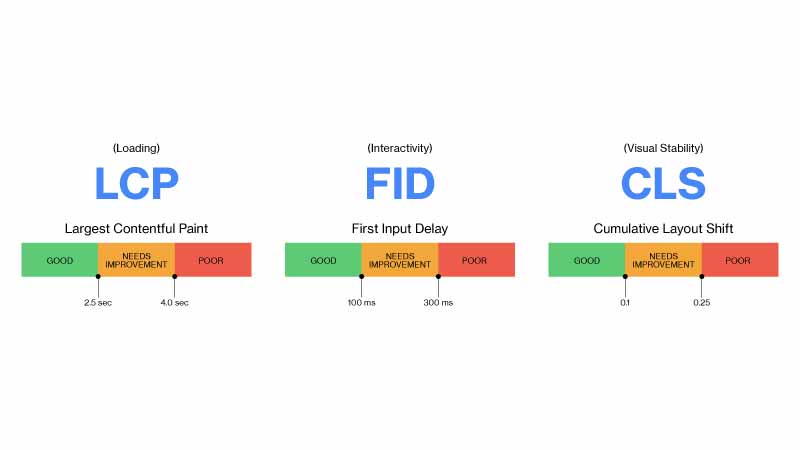Google Puts User Experience First
Most of the time Google’s updates do not attract much attention and end-users keep using their products. Google’s algorithm tweaks affect SEO professionals who try to keep themselves abreast of all the factors that will help their websites remain on ‘page one of Google’s Search. Google’s updates for 2021 are slightly different from the company’s […]
Topics

Most of the time Google’s updates do not attract much attention and end-users keep using their products. Google’s algorithm tweaks affect SEO professionals who try to keep themselves abreast of all the factors that will help their websites remain on ‘page one of Google’s Search.
Google’s updates for 2021 are slightly different from the company’s previous ones. Since 2020, Google has been saying the new page experience metrics and selected Core Web Vitals will have a significant impact on the way websites rank.
Google Values UX
But why is Google focussing on the Core Web Vitals now? Take a look at the statistics. Google answers approximately 5.6 billion search queries every day from across the world. That translates to approximately 63,000 queries every second and almost 2 trillion searches in a year. Google also makes efforts to personalise search results, in turn, increasing the chances that users will opt for Google the next time they have a question. If Google wants to refine the search process and make the search experience memorable for users, it should not surprise anybody.
It’s common knowledge that almost 75 to 80 per cent of Internet users do not look for information that appears on the second page of Google’s search results. Not surprisingly, SEO professionals lose their sleep while trying to ensure their website ranks on Google’s first page. Indeed, the pressure on digital marketers and SEO specialists is real.
Understanding Core Web Vitals
Just how marketers worldwide have begun giving more importance to the overall CX factor as compared to sales numbers to measure success, similarly, Google’s Page Experience measures how users perceive the experience of interacting with a web page over and above the information value it provides. Page Experience is a set of signals that are a subset of Google’s Core Web Vitals. Core Web Vitals are the complete set of metrics that measure parameters that determine the ease of browsing for users. Core Web Vitals measure parameters like the loading speed of a webpage, how interactive or visually appealing it is. Core Web Vitals also measure mobile-friendliness, safe-browsing, HTTPS, and intrusive interstitial guidelines. Google says the Core Web Vitals of all websites must be measured by website owners as the results reflect the real-world experience of user-centric behaviour, like browsing the internet. Few web vitals like the speed at which a webpage loads and how well a website is designed to make information search a hassle-free process have existed as the parameters determining a website’s ranking.
Also Read: Lost The Cookie? Join The FLoC
It’s not like SEO specialists and publishers didn’t pay heed to these web vitals earlier, but this time Google’s Page Experience Signals will focus on a multitude of factors equally at the same time. Although Google says it will change the metrics comprising Core Web Vitals slowly over time, for 2021, Google’s focus is on three key components. These components are as follows:

Loading
The speed at which a webpage loads is measured with Largest Contentful Paint (LCP). LCP measures the time taken by the largest element of a website to load. Websites with heavy video or image content will not find it easy and will have to optimise their site content or design to become lighter but can’t lose their focus. To provide a good user experience, LCP should occur within 2.5 seconds of when the page first starts loading.
Interactivity
First Input Delay (FID) measures how long it takes for user requests to load on a browser. When a user clicks a specific link on the site, the time taken for that specific page to load measures the interactivity of a website. To provide a good user experience, pages should have FID of 100 milliseconds or less.
Visual Stability
Cumulative Layout Shift (CLS) measures visual stability. By visual stability, Google intends to measure how items on a website shift and the duration of the shift when the webpage is loading. Google says websites should try and achieve a CLS of 0.1 or less to deliver a good user experience.
Some of the other Core Web Vitals that have remained unchanged are:
Mobile usability: A URL shouldn’t contain mobile usability errors to qualify for Good status.
Security issues: Security issues on a website disqualify all URLs on the site from receiving a Good status.
HTTPS usage: A page must be made available over HTTPS to be eligible for Good page experience status.
Ad Experience: Advertising techniques that are distracting, interrupt users, or otherwise not conducive to a good user experience are a strict no for publishers. If a site is flagged by users for a bad advertisement experience, all pages on the said site are disqualified.
Google’s Core Web Vitals are user-centric, measurable signals for which Google provides a target threshold score. Publishers and SEO specialists will do good to keep in mind that a good score to maintain is at least 75 percentile for the primary metrics mentioned above.
Also Read: Why Is FloC Getting Side-Eyed By Marketers?
Measuring Performance of Core Web Vitals
Google has put user experience right on top with the rollout of the Page Experience and renewed focus on Core Web Vitals. To make evaluation easier and help publishers see where their website stands, the following tools measure Core Web Vitals.
Chrome User Experience Report: Collects anonymised, real-user measurement data for each Core Web Vital.
PageSpeed Insights: PageSpeed Insights analyses the content of a web page, then generates suggestions to make that page faster.
Core Web Vitals Report: The Core Web Vitals report shows URL performance grouped by status, metric type, and URL group (groups of similar web pages). Also, how web pages perform, based on real-world usage data (also known as field data).
The performance of any website can change based on a user’s device capabilities, their network conditions, what other processes may be running on the device, and how they’re interacting with the page. While each of these Web Vitals’ metrics can be influenced individually through end-user interaction, a field measurement can give publishers and SEO specialists a fairly accurate complete picture. Publishers can track pages with a good page experience report directly through the Google Search Console which combines the Core Web Vitals report with other page experience signals. Google says that the Page Experience update will start rolling out in mid-June 2021, but will not play its full role in search rankings until the end of August. Google has also made it clear that Core Web Vitals will become ranking signals that will also combine existing UX-related signals.
Getting Started On The Core Web Vitals Journey
Page Experience and Core Web Vitals will not hamper how websites work, but it may affect website ratings negatively if publishers and SEO professionals don’t take the metrics seriously. Google says the changes implemented are not meant to penalise publishers but improve how content is accessed by users, and match up to users’ expectations through improving the search capabilities.
Here’s a publishers’ checklist to get your web pages featured on page one of Google Search.
Content: Publishers to ensure only original content and valuable information is displayed on the website. The headline has to be meaningful and to the point. If the headline cannot convey the full information, use a meta headline, or a descriptive summary of the content.
Check For Errors: Ensure only trustworthy content that is verifiable and true is published on the website.
Presentation: Publishers to ensure only well-researched content is presented in an aesthetic manner. Users looking for information must have ease of access to the information.
Add value to your publication: Ask yourself whether the content available on your site is the same as your competitors. If yes, then re-look at the presentation or perspective of your content. As a publisher, your goal is to delight the reader who may come to your site for information or a product.
Google’s priority will be user experience and satisfaction of those who use Search and look for information. Publishers will do good to remember that a user’s first impression might as well be their final one, and this can impact their website ranking.








































































































